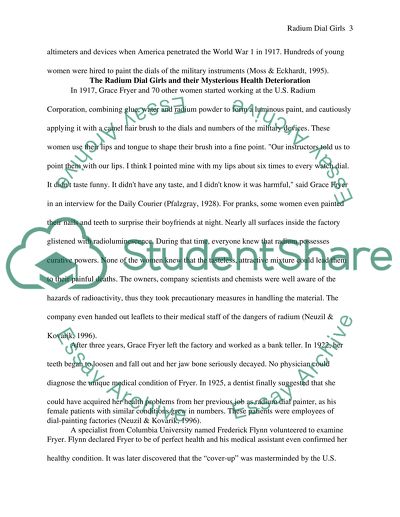Cite this document
(“Radium Dial Girls Research Paper Example | Topics and Well Written Essays - 1250 words”, n.d.)
Retrieved from https://studentshare.org/nursing/1450709-radium-dial-girls
Retrieved from https://studentshare.org/nursing/1450709-radium-dial-girls
(Radium Dial Girls Research Paper Example | Topics and Well Written Essays - 1250 Words)
https://studentshare.org/nursing/1450709-radium-dial-girls.
https://studentshare.org/nursing/1450709-radium-dial-girls.
“Radium Dial Girls Research Paper Example | Topics and Well Written Essays - 1250 Words”, n.d. https://studentshare.org/nursing/1450709-radium-dial-girls.


